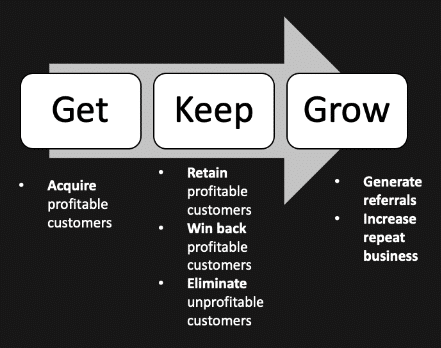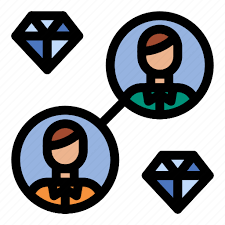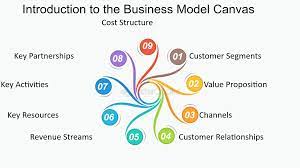Best Customer Relationship Business Model Canvas Examples

The Unite Value Proposition Canvas, in conjunction with a well-defined Customer Relationship in Business Model Canvas (BMC), is crucial for the success of a business. By utilizing the key assets and capabilities identified earlier, a large organization can develop a compelling and distinctive value proposition for its customers. The value proposition articulates the unique benefits and value that a business provides to its target customers, differentiating it from competitors. Recognizing the synergy between the Unite Value Proposition Canvas and the Customer Relationship BMC is vital for businesses aiming to excel in a competitive environment and deliver exceptional value to their customers.
In this post, we will explore the concept of customer relationships within the business model canvas and highlight its crucial role in driving business success.
What is Customer Relationship in Business Model Canvas
The Customer Relationships block, the fourth component of the business model canvas, allows businesses to optimize their capabilities for acquiring, retaining, and growing customers. Alexander Osterwalder and Strategyzer are widely credited for developing the Business Model Framework.
The Customer Relationship business model canvas serves as a space to capture how the business will acquire customers, retain them, and grow sales and the customer base.

Within the business model canvas block, three drivers are essential:
- Customer Acquisition: Describes how the business will attract and gain new customers.
- Customer Retention: Focuses on strategies and activities to keep existing customers satisfied and loyal.
- Sales Growth and Customer Base Expansion: Encompasses efforts to increase sales and expand the customer base through cross-selling, upselling, and other growth strategies.
Types of Customer Relationship Business Model Canvas
Different customer segments and categories require different approaches and strategies. This influences how companies should interact with their clients to acquire and retain customers, ultimately driving sales. The three major drivers or goals of customer relationships are acquisition, retention, and sales growth.
1. Customer Acquisition. Acquiring a new client involves persuading them to choose your product and prefer your brand over competitors in your industry. The steps are as follows:
- Creating valuable content
- Reaching customers via emails
- Social media marketing
- Analyzing customer acquisition efforts
2. Customer Retention. The cost of acquiring new customers is typically higher than retaining existing ones. Building strong customer connections focuses on loyalty and long-term relationships with a product or brand. This stage relies on strategies that encourage repeat purchases and customer referrals to bring in new consumers.
- Maintaining a distinct brand idea
- Using social proof
- Staying in touch
- Matching customer needs
- Giving a helper-outer
- Offering add-ons
- Ensuring quality
- Appreciating customers
3. Sales Growth. Organizations should aim to not only encourage customers to make repeat purchases but also to increase their average order value by buying more products at a time. This aspect heavily relies on a solid understanding of customer segmentation, including their needs, preferences, demands, and aspirations within each category.
Types of Customer Relationship Business Model Canvas
The key to determining how to interact with your customers is understanding their needs and expectations and making an effort to cater to them in the best possible way.
A Customer Relationship Business Model Canvas embraces six major types of CR, including:
- Personal assistance involves real people providing tailored support, advice, or training to clients, either in person or over the phone.
- Dedicated personal assistance is similar to personal assistance but involves a dedicated team or individual offering exclusive help to specific clients or a group of customers.
- Self-service empowers clients to resolve their issues with minimal interaction with the business. This can include online resources like informational databases, detailed instructions, or FAQ sections.
- Automated services rely on automated systems, such as chatbots and automated phone systems, to communicate with clients. Customer profiles are often created based on interests and purchase behavior to better meet their expectations and needs.
- Communities bring customers together to share experiences, opinions, and information. This can be facilitated through online forums, social media groups, and other similar platforms.
- Co-creation involves close collaboration between a company and its customers to create value together. This can range from welcoming customer feedback and input to involving consumers in the design and development process of a product or service.
Creating Customer Relationships Business Model Canvas

In today’s competitive business landscape, a clear understanding of customer relationships is crucial for organizations. The Business Model Canvas serves as an effective tool to help businesses gain insights and effectively manage their customer relationships.
Understanding the Concept of Business Model Canvas Customer Relationship
A customer relationship business model canvas is a visual representation that captures the essential components and building blocks of a business model. It offers a comprehensive view of how various elements interconnect to deliver value and generate revenue.
The canvas serves as a valuable tool for assessing existing business models, identifying areas of enhancement, and making informed decisions. Its visual format promotes collaboration among stakeholders, stimulating innovation and fostering creative problem-solving.
The customer relationship business model canvas comprises nine building blocks that represent key aspects of a business: Customer Segments, Value Propositions, Channels, Customer Relationships, Revenue Streams, Key Resources, Key Activities, Key Partnerships, and Cost Structure.
The Role of Customer Relationships in Business Model Canvas
Customer relationships are indeed a fundamental aspect of every business model. They encompass the interactions and connections that businesses establish and maintain with their customers. Strong customer relationships offer numerous benefits, including increased customer loyalty, enhanced brand reputation, and a higher probability of repeat business.
Building and sustaining the Customer relationship business model canvas is an ongoing effort that demands dedication. It involves comprehending the needs and preferences of customers, delivering exceptional customer service, and consistently engaging with them to nurture trust and loyalty. By prioritizing customer relationships, businesses can cultivate long-term success and create a loyal customer base.
Implications for Businesses in the Customer Relationship Business Model Canvas (BMC):
Customer Relationships are indeed vital for the success of a business model, as they significantly influence customer satisfaction, loyalty, and long-term profitability. At Digital Leadership, our business model strategy service is designed to be an essential tool for businesses, providing them with a clear roadmap for achieving success. With our expertise, we facilitate the alignment of strategies with organizational goals, promote adaptability in dynamic market conditions, and foster innovation for sustained growth.
1. Developing Customer Loyalty:
Prioritizing customer relationships within the Business Model Canvas (BMC) leads to increased customer loyalty and retention. Satisfied customers are more likely to remain loyal, make repeat purchases, and become advocates for the brand.
2. Word-of-Mouth Marketing:
Positive word-of-mouth generated by loyal customers, as emphasized in the customer relationship Business Model Canvas (BMC), is a powerful tool for attracting new customers and enhancing brand reputation. Satisfied customers are more likely to share their positive experiences, thereby expanding the customer base.
3. Competitive Advantage
The Business Model Canvas (BMC) emphasizes the importance of a positive reputation and a strong brand image. Building trust and loyalty through positive customer relationships differentiates a business from its competitors, creating a competitive advantage in the market.
The Business Model Canvas (BMC) highlights the significance of customer feedback in comprehending customer needs and preferences. By integrating customer feedback into the BMC, businesses can enhance products, services, and overall customer experience, leading to increased customer satisfaction.
5. Data-Driven Decisions
Using data analytics and insights, as mentioned in the Business Model Canvas (BMC), enables businesses to make informed and data-driven decisions. This leads to an enhanced customer experience, effective resolution of pain points, and optimization of business strategies.
6. Enhancing Customer Support
Improving customer support within the Business Model Canvas (BMC) enhances the overall customer experience, resulting in positive impressions and increased loyalty. Effective issue resolution reduces customer churn and improves retention rates.
7. Sustainable Growth
Prioritizing customer relationship Business Model Canvas (BMC) fosters long-term business growth. Loyal customers, as highlighted in the BMC, provide a stable revenue stream, reducing the reliance on costly customer acquisition strategies.
8. Upselling and Cross-Selling
By prioritizing the development of strong customer relationships in the Business Model Canvas (BMC), businesses can effectively explore upselling and cross-selling opportunities. Trusting relationships make customers more open to additional offerings, contributing to revenue growth.
Once the customer relationship business model canvas is implemented, it is crucial to continuously monitor its effectiveness and make necessary adjustments. Regular analysis of customer feedback, monitoring key performance indicators, and staying updated on industry trends are valuable practices to optimize customer relationships for success.
Optimizing Customer Relationship Business Model Canvas:

(A Key Element of the Business Model Canvas)
The Customer Relationship Business Model Canvas is a powerful tool that helps businesses analyze and optimize their customer interactions. By identifying, understanding, and catering to different customer segments, businesses can provide targeted offerings, allocate resources effectively, and gain a competitive advantage in the market.
1. Customer Relationship Building
Building strong customer relationships starts with understanding your target audience and their specific needs and preferences. By gaining insights into customer segments such as small businesses, mid-sized enterprises, and large corporations, businesses can tailor their approach to meet the distinct software needs and budgets of each segment.
2. Customized Approach for Success
Effective customer relationship management requires a customized approach that aligns with the unique shopping behaviors and expectations of different customer segments. For example, an e-commerce store needs to cater to individual consumers, resellers, and corporate buyers, understanding that these groups have diverse requirements and motivations.
3. Specialized Customer Care
In specific industries like healthcare, customer relationships are centered around providing specialized care and services. Healthcare clinics, for instance, can focus on customer segments such as pediatric patients, adult patients, and senior patients, ensuring that each group receives tailored medical attention and support.
4. Leveraging Technology:
Automation and self-service technologies play a vital role in managing customer relationships. By implementing automated systems like chatbots and self-service portals, businesses can provide instant support, answer common inquiries, and empower customers to find solutions independently, thereby enhancing customer satisfaction and streamlining operations.
5. Collaboration and Co-creation:
The customer relationship block of the business model canvas also provides opportunities for collaboration and co-creation. By actively involving customers in the development process, businesses can foster a sense of ownership and loyalty. For instance, automobile manufacturers can engage customers in focus groups and design workshops to co-create new features, ensuring that their products align with customer expectations.
Customer relationship business model canvas examples
Here are some examples of customer relationships business model canvas:
- Personal Assistance:
- A software company providing dedicated account managers to assist clients with onboarding and ongoing support.
- A luxury hotel offering personalized concierge services to enhance the guest experience.
- Dedicated Personal Assistance:
- A financial institution assigning relationship managers to high-net-worth clients for exclusive financial advice and services.
- An IT consultancy offering a dedicated team to provide ongoing technical support to a specific client.
- Self-Service:
- An e-commerce platform providing a user-friendly interface for customers to browse and purchase products without direct interaction with sales representatives.
- A fitness app offering a comprehensive library of workout videos and tutorials for users to access and follow at their convenience.
- Automated Services:
- An online retailer using chatbot technology to provide instant customer support and answer frequently asked questions.
- A telecommunications company using an automated phone system to handle bill payments and basic customer inquiries.
- Communities:
- An online clothing brand creating a customer community forum where customers can share styling tips, and product reviews, and engage with each other.
- A software company hosting a user conference where customers can network, attend workshops, and provide feedback on product enhancements.
- Co-creation:
- An automobile manufacturer inviting customers to participate in focus groups and design workshops to contribute ideas for new car features.
- A beauty brand collaborates with influencers and customers to develop limited-edition product collections based on their preferences and input.
Customer Segments can vary widely across industries. Here are a few Business Model Canvas examples:
- B2B Software Company:
- Small businesses
- Mid-sized enterprises
- Large corporations
- E-commerce Store:
- Individual consumers
- Resellers
- Corporate buyers
- Healthcare Clinic:
- Pediatric patients
- Adult patients
- Senior patients
5 Best Customer Relationship Business Model Canvas Examples
- How Can SAP DMC Help Your Business: 5 Best Solutions
- The Power of Idea Innovation in Business!
- What is AOP Finance Meaning: Acronym Business| Benefits
- What is E-commerce Business Intelligence: 5 Top Tools for BI
- Digital Transformation in Business: Trend| Future| Benefits
- What is Business Process Transformation?
- Saas Company Examples: Everything You Need to Grow Your SaaS Business
- Types of Business Organizations | Private Limited Companies
- Business Planning Process and Types of Business Strategy
-
9 Best Free Funnel Builders for Affiliate Marketing: Boost Your Sale
- 5 Best Customer Relationship Business Model Canvas Examples




